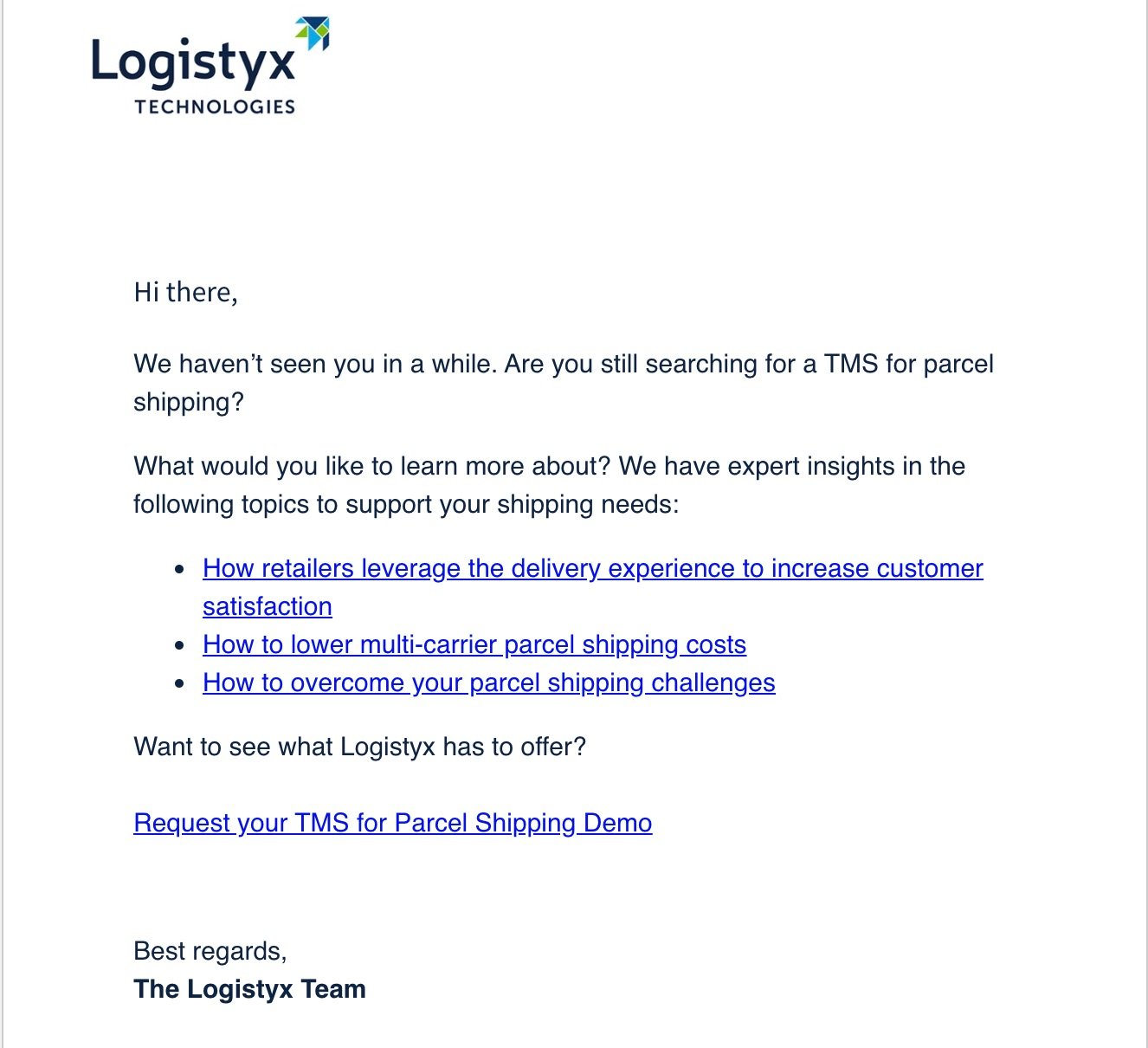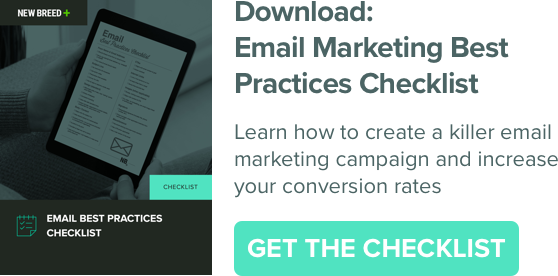
We can all relate to having contacts in our database that at one point seemed like great leads but either stopped responding to us or never came back to our site.
But, just because a lead has turned cold doesn’t mean there's no hope for that prospect. Finding ways to bring those prospects back to your site or have a conversation with your company again is still something your marketing and/or sales team should be working at.
One way that you can do that is by setting up re-engagement emails to go out to your prospects.
What is a Re-engagement Email?
A re-engagement email is an email you send strategically to a segmented list of contacts with the intention of waking up contacts in your database who have gone cold.
These could be contacts that have recently stopped interacting with your brand or site, or they may be contacts that you haven’t heard from in a year because you weren’t a good fit for them at the time but whose circumstances have since changed.
The ultimate goal of any re-engagement email is to get that prospect to raise their hand and say they are interested in either your content, your company or best case scenario — that they are ready to speak to sales.
When it comes to re-engagement emails, or any emails, segmentation is everything. Your email needs to be as tailored and customized as possible for the people you are sending it too.
Not all contacts in your database are the same, even if they have all gone cold. There are more ways to break down that list into segments that you can serve different messaging too or a different email entirely.
For instance, you don’t want to send an email that says “we haven’t heard from you in a while” to contacts that haven't been on your site for over a year or that have never engaged with your brand at all.
Here are four types of re-engagement emails that you can use as guides to build your own re-engagement strategy:
The “We Haven’t Seen You in Awhile” Email

This is one of the most classic re-engagement emails. This email goes out to prospects that have interacted with your brand in the past. Use this email to make a targeted outreach to pique their interest again.
The key to this style of email is to keep it short, sweet and honest. You don’t want it to come off as a sales pitch. Keep it conversational. You can use the fact that you have noticed they have either stopped engaging or haven’t engaged with your brand in a while to grab their attention.
You should include different links or resources that they can take as their next step, but don’t pigeon hole them if you aren't sure what they are most interested in.
The “Latest Offer” Email

This email can be targeted at prospects and customers alike that have buying potential and have previously shown interest. This email is versatile because it promotes a new/latest offer from the company, such as an annual report, webinar or an e-book that you have recently launched.
These are promotional emails, so don’t be afraid to showcase them as such. Tell the reader how the offer promoted in the email will benefit them and why they should click through to the landing page or offer itself.
You can also use an image in the email to help garner click-through. This could be a relevant image to the offer being promoted or even the cover image of the offer itself.
The “Closed-Lost” Email

Re-engagement is a strategy not just targeted at ToFu prospects, but BoFu prospects too. This email is targeted at opportunities that were closed-lost by your sales team.
Elements in this email are very similar to the “we haven’t seen you in a while” email because the goal is to understand the prospect better and tailor the content sent to them to help serve their needs.
When drafting this email make sure to acknowledge the fact that you have a history with this contact. You have access to that information, so don’t make them feel like you are undermining them or trying to pretend that never happened.
Focus on trying to have as honest of a conversation as possible with this person and try to incite a response vs. only focusing on a click-through rate.
The “Soft Touch” Email

A re-engagement example doesn’t need to make itself known when it arrives in a prospect’s inbox. While you may know the goal is to get the prospect to engage again, it doesn’t have to explicitly say that. Using a softer touch, such as recommending a blog post related to what the prospect has engaged with in the past, is a simple way to casually show up in their inbox without being too aggressive.
Keep it short and simple with these emails and focus on click-through rates. You can also reference a goal or challenge that the prospect has in order to connect with them.
Key Takeaway
Re-engagement emails are a great way to open up a conversation with prospects that you haven’t heard from in a while.
There are many different approaches you can take with your email strategy. But regardless of how you decide to approach your re-engagement emails, make sure that you keep your audience top of mind and send them offers that truly benefit them and fit who they are as a buyer as well as where they are at in their journey.
Olivia Perek-Clark
Olivia Perek-Clark is New Breed's Principal Solutions Architect, leading the charge on designing customized solutions within the HubSpot ecosystem. With over 10 years of experience using the HubSpot platform to drive measurable revenue success, Olivia has a passion for sharing her knowledge and insights on how to...





